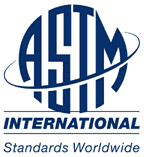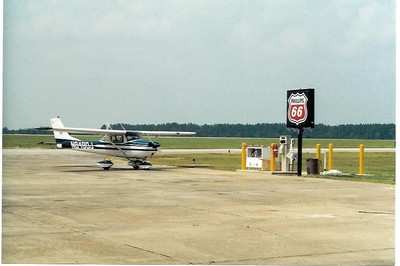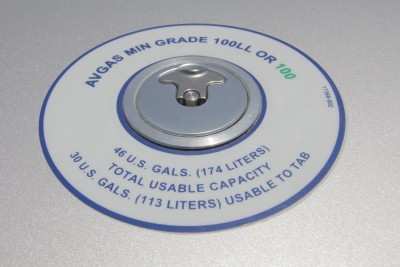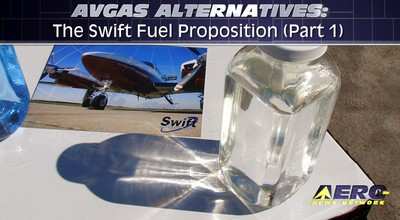...And Here, Darn it, Are The Heartbreakers
By ANN News Editor, Tom Patton
Aero-Note: SORRY to keep dragging
this process out... but for reasons that will become evident
shortly, these are BUSY days at ANN. Still; I wanted to finish
these before the end of January and I'm not quite there yet...
though I hope to finish the final two in each category this week...
we shall see. In the meantime, wait til you see what we've been up
to... -- Jim Campbell-ANN E-I-C
 It is both the most "fun," and most
difficult task, facing the ANN staff at the end of every year --
determining who, or what, did the most to promote the cause of
aviation in the past 365 days... while also chastising those people
or entities that did all they could to undermine the many successes
the aerospace community has managed to accomplish.
It is both the most "fun," and most
difficult task, facing the ANN staff at the end of every year --
determining who, or what, did the most to promote the cause of
aviation in the past 365 days... while also chastising those people
or entities that did all they could to undermine the many successes
the aerospace community has managed to accomplish.
Alas, 2010 saw more than its fair share of downers, aviation-wise.
Sure, "stuff" happens... but a few folks, issues, or entities
seemed to go out of their way to create problems for the world of
aviation.
So... it is ANN's annual obligation to recognize a number of our
Aero-Heroes/Heartbreakers for 2010... in something of an informal
order -- Saving the 'best' for last.
Let us know what you think of our selections... whom YOU would
have liked be included, or omitted, from such a list. In the
meantime, we hope those who had something to do with this year's
selections think a little more positively about the welfare of this
industry, so that future lists become harder and harder to
catalog.
Be it ignorance, arrogance or just plain incompetence, these
were the folks or topics that made our lot a whole lot more
difficult and immeasurably injured the aviation world in the past
year.
Shame on those issues, folks, or groups that made our lot so
much tougher in 2010...
Heartbreaker: The Dilemma Over Fuel
Without avgas, GA is going nowhere. And the EPA seems to be
trying hard to make that nightmare a reality. One of the ongoing
debates this year, and one that's likely to continue into the next
several years, is what will be burning to make our airplanes go.
Unfortunately, there is no consensus, and a plan to reach one is
likely to take years ... maybe longer than we have..

The issue is that any replacement for 100LL needs to be a "drop
in" fuel ... that is, one that will not require the
re-certification of every engine in every airplane to run on the
new juice. And since lead has unique characteristics which make
aviation engines, particularly high-performance engines, run
better, smoother, longer, and more reliably, finding that "drop in"
replacement is proving very elusive.

ANN reported in June that Teledyne Continental Motors released a
statement interpreted by many as endorsing 94UL (basically 100LL
without the tetraethyl lead additive resulting in 94-octane avgas)
as a likely candidate for an unleaded fuel. Following TCM’s
announcement, a large number of owner/pilots began to realize that
such a solution would not work for operators of higher
performance/output engines. While these operators represent about
30% of the general aviation piston fleet, they consume about 70% of
the fuel. Curt Sanford of COPA, noted that selection of the wrong
fuel (sub 100 octane) would kill about 70% of the GA economy as
well – fuel sales, FBO services, maintenance, aircraft
values, etc. The resulting devastation of the GA support
infrastructure would in turn adversely impact even those aircraft
owners whose engines could operate on a lower octane fuel. Also
prior to this meeting, AOPA President Craig Fuller had released a
statement on the 100LL replacement issue, that the owner groups
found encouraging: “The new fuel must operate safely in
high-compression and turbocharged engines, and it has to be
manufactured, distributed, and sold at a realistic price.”
However, the same statement included some ambiguity because in one
sentence it included 94UL as one of “several promising
unleaded alternatives…”

ASTM’s Coordinating Research Council Unleaded Avgas
Group(CRC) has tested more than 200 fuel blends over the past 20
years, looking for a high-octane unleaded alternative. Those that
demonstrated adequate detonation resistance were tested further to
analyze other fuel properties as defined by the ASTM’s D910
specification for 100LL avgas. Of course, the assumption is that
the required innovation can be found within the constraints of the
D910 spec, and after looking for it within or near the D910 spec
for 20 years, it seems far more likely that the solution will
probably be found elsewhere and that an earnest effort outside of
the constraints of the D910 spec has not yet been conducted.

States are required by the EPA to meet National Ambient Air
Quality Standards (NAAQS) for Lead of 150 ng/m3 by 2017. This takes
into account all forms of lead pollution, but it could mean that
piston engine aircraft operations could be restricted in densely
populated areas, and would require a significant effort on the part
of the GA community to sway public/political support to maintain GA
airports.
The concerns go beyond engine performance. Safety must be
considered as well. EAA's Doug McNair said during an online media
briefing mid-year that the FAA certifies engines with a specific
fuel, and that high performance engines/aircraft require 100 octane
fuel for detonation (“knock”) protection. But the 100LL
ASTM D-910 standard includes many performance requirements
necessary for safety, including octane, vapor pressure,
distillation curve (cold/hot and high altitude operations as well
as starting ability), freeze point, water separation, and long-term
stability.

A coalition made up of the GA advocacy groups EAA, NBAA, and
AOPA, along with GAMA and NATA, and avgas production representative
organizations API (American Petroleum Institute) and NPRA (National
Petrochemical & Refiners Association). After testing more than
200 unleaded fuel blends, and full-scale engine tests on 45
high-octane unleaded blends, the Coordinating Research Council
(CRC) unleaded avgas group, a collaborative research and testing
effort among fuel producers, GA manufacturers, FAA, AOPA and EAA,
concluded that there is no direct drop-in replacement for 100LL
fuel. While the performance drops will be most significant in
high-performance and turbocharged engines which make up only about
30 percent of the fleet, those users consume about 70 percent of
the avgas used in the country each year, so a direct replacement
that requires no engine modifications is critical.

The coalition, and in fact the GA community at large,
understands that lead is harmful to humans. So taking part in the
effort to resolve this issue is certainly important to those who
fly. And the coalition agrees that the day of reckoning is coming,
with only one supplier of the tetra-ethyl-lead (TEL) additive and a
decreasing demand for leaded auto fuel.

There is some encouraging research being done in this area, and
a company called Swift Fuel says it has made great strides towards
that direct 100LL replacement. Check out Aero-TV's in-depth three-part series on the topic for more. But
as it stands, the clock is ticking on what we will burn to make our
airplanes fly, and a day of reckoning is coming. The potential loss
of something we hold dear makes fuel one of our Heartbreakers of
2010.
 ANN's Daily Aero-Linx (12.12.25)
ANN's Daily Aero-Linx (12.12.25) ANN's Daily Aero-Term (12.12.25): Land And Hold Short Operations
ANN's Daily Aero-Term (12.12.25): Land And Hold Short Operations ANN FAQ: How Do I Become A News Spy?
ANN FAQ: How Do I Become A News Spy? NTSB Final Report: Cirrus Design Corp SF50
NTSB Final Report: Cirrus Design Corp SF50 Airborne 12.08.25: Samaritans Purse Hijack, FAA Med Relief, China Rocket Fail
Airborne 12.08.25: Samaritans Purse Hijack, FAA Med Relief, China Rocket Fail










